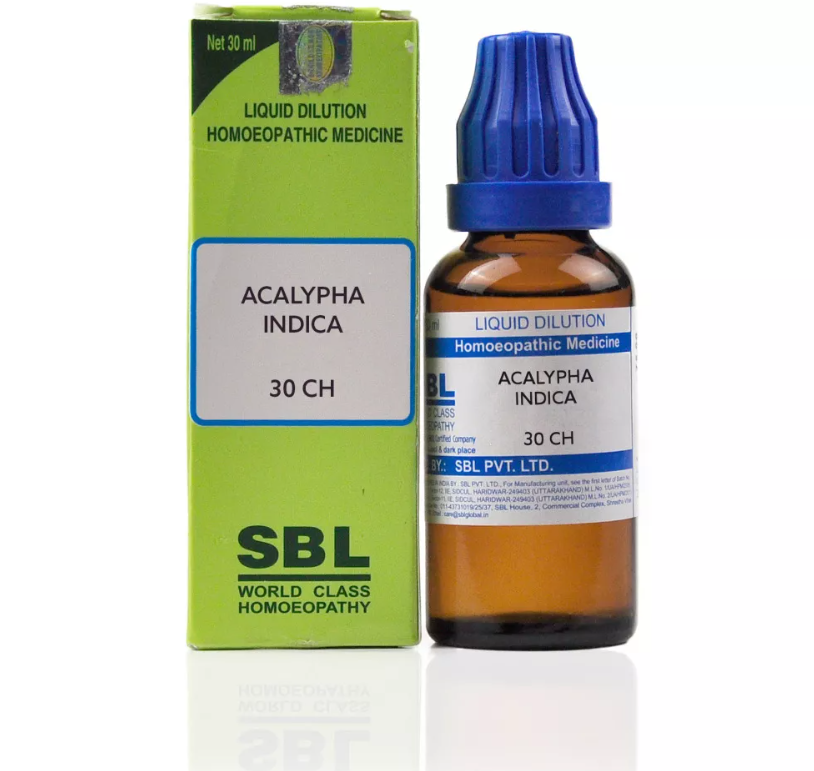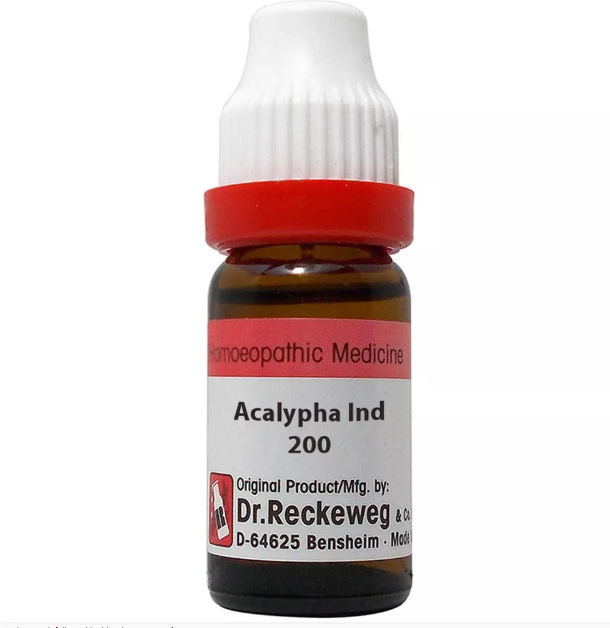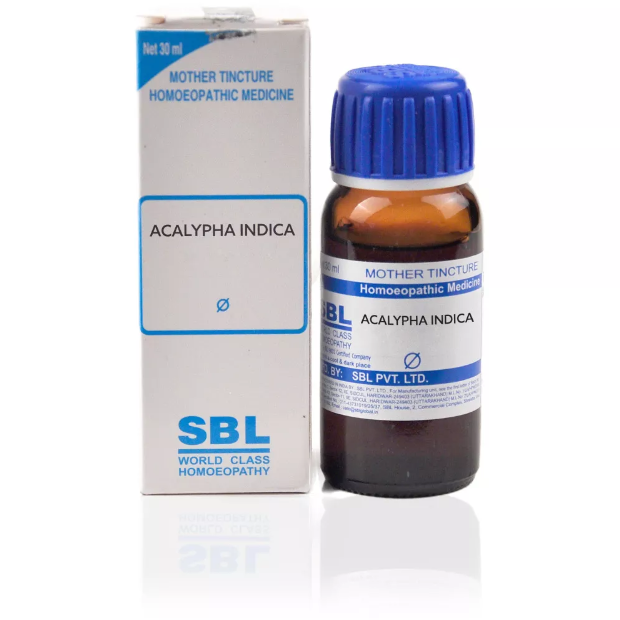ACALYPHA INDICA Q, 6C, 12C, 30C, 200C, 1M, 10M USES AND SYMPTOMS
 Acalypha Indica, or Indian Nettle, stands out for its distinctive impact on the digestive and respiratory systems. Tailored for cases of early-stage phthisis, it tackles a persistent, harsh cough with bloody expectoration and arterial hemorrhage, yet without accompanying fever. Notably, weakness prevails in the morning, gradually yielding to increased strength throughout the day, coupled with progressive emaciation.
Acalypha Indica, or Indian Nettle, stands out for its distinctive impact on the digestive and respiratory systems. Tailored for cases of early-stage phthisis, it tackles a persistent, harsh cough with bloody expectoration and arterial hemorrhage, yet without accompanying fever. Notably, weakness prevails in the morning, gradually yielding to increased strength throughout the day, coupled with progressive emaciation.
In the abdominal realm, it kindles a burning sensation and fuels spluttering diarrhea marked by forceful expulsion of noisy flatus, accompanied by bearing down pains and tenesmus. Abdominal discomfort includes rumbling distention and gripping pain, with rectal hemorrhages worsening in the morning.
On the respiratory front, Acalypha Indica induces a dry, hard cough followed by morning and nocturnal hemoptysis. Chest pain persists and is both constant and severe. The blood appears bright red and profuse in the morning but turns dark and clotted in the afternoon. The pulse, meanwhile, maintains a soft and compressible rhythm. Noteworthy is the burning sensation experienced in the pharynx, esophagus, and stomach.
Skin manifestations include jaundice, itching, and localized, furuncle-like swellings. A key modality is the aggravation in the morning.
In its relationships, Acalypha Indica can be compared to Mill., Phos., Acet-ac., and Kali-n.
SYMPTOMS OF ACALYPHA INDICA
General Symptoms:
- Marked action on the alimentary canal and respiratory organs.
- Indicated in incipient phthisis (early-stage tuberculosis) with hard, racking cough.
- Bloody expectoration and arterial hemorrhage, without febrile disturbance.
- Very weak in the morning, gaining strength during the day.
- Progressive emaciation.
Abdominal Symptoms:
- Burning in the intestines.
- Spluttering diarrhea with forcible expulsion of noisy flatus.
- Bearing down pains and tenesmus.
- Rumbling distention and griping pain in the abdomen.
- Rectal hemorrhage, worse in the morning.
Respiratory Symptoms:
- Dry, hard cough, worse in the morning and at night.
- Followed by hemoptysis (coughing up blood).
- Constant and severe pain in the chest.
- Blood is bright red and profuse in the morning; dark and clotted in the afternoon.
- Pulse is soft and compressible.
- Burning in the pharynx, esophagus, and stomach.
Skin Symptoms:
- Jaundiced skin.
- Itching.
- Circumscribed furuncle-like swellings.
Modalities:
- Symptoms worsen in the morning.
Relationships:
- Comparable to Mill., Phos., Acet-ac., and Kali-n.

- Comparable to Mill., Phos., Acet-ac., and Kali-n.
selection of the potency
Individualization:
- Homeopathy is based on the principle of treating the individual, not just the disease. The unique symptoms and characteristics of the person are crucial in determining the most suitable potency.
Intensity of Symptoms:
- The intensity of the symptoms guides the choice of potency. If the symptoms are intense and acute, a lower potency (e.g., 6C, 30C) might be considered. For chronic conditions with less intensity, higher potencies (e.g., 200C, 1M) may be appropriate.
Sensitivity of the Patient:
- Some individuals are more sensitive to homeopathic remedies, while others may require higher potencies. The practitioner considers the patient’s sensitivity when selecting the potency.
Acute vs. Chronic Conditions:
- Lower potencies are often used for acute conditions, while higher potencies may be considered for chronic or long-standing issues.
Previous Response to Potencies:
- The patient’s response to previous homeopathic treatments helps guide the choice of potency. If a particular potency has been effective in the past, it may be repeated or adjusted as needed.
Vital Force and Susceptibility:
- Homeopathy views illness as a disturbance in the vital force. The practitioner assesses the patient’s overall vitality and susceptibility to determine the appropriate potency.
Aggravation or Amelioration:
- The direction of the symptom response (aggravation or amelioration) after taking a remedy can influence the choice of potency.
Miasmatic Considerations:
- In classical homeopathy, the concept of miasms (inherited disease tendencies) is considered. The practitioner take this into account when selecting the potency.
Practitioner Experience:
- The experience and preference of the homeopathic practitioner play a role. Some practitioners may have success with certain potencies based on their clinical experience.

- The experience and preference of the homeopathic practitioner play a role. Some practitioners may have success with certain potencies based on their clinical experience.
SAFETY INFORMATION
- Do not exceed the recommended dose by physician
- Keep out of the reach of children
- Store in a cool dry place away from direct sunlight
- Maintain half an hour gap between food/drink/any other medicines and homoeopathic medicine
- Avoid any strong smell in the mouth while taking medicine e.g. camphor, garlic, onion, coffee, hing
Medicine images use for reference only selection of homeopathic medicine depends on the individual’s specific symptoms and overall constitution. Moreover, homeopathy is a holistic system of medicine that treats the individual as a whole. In addition to addressing the physical symptoms, it takes into account the emotional and mental state of the person. Consequently, it’s crucial to consult with a qualified homeopathic practitioner for personalized treatment.
The information provided on this website is intended solely for educational purposes. Always seek the advice of your physician or other qualified health provider.
